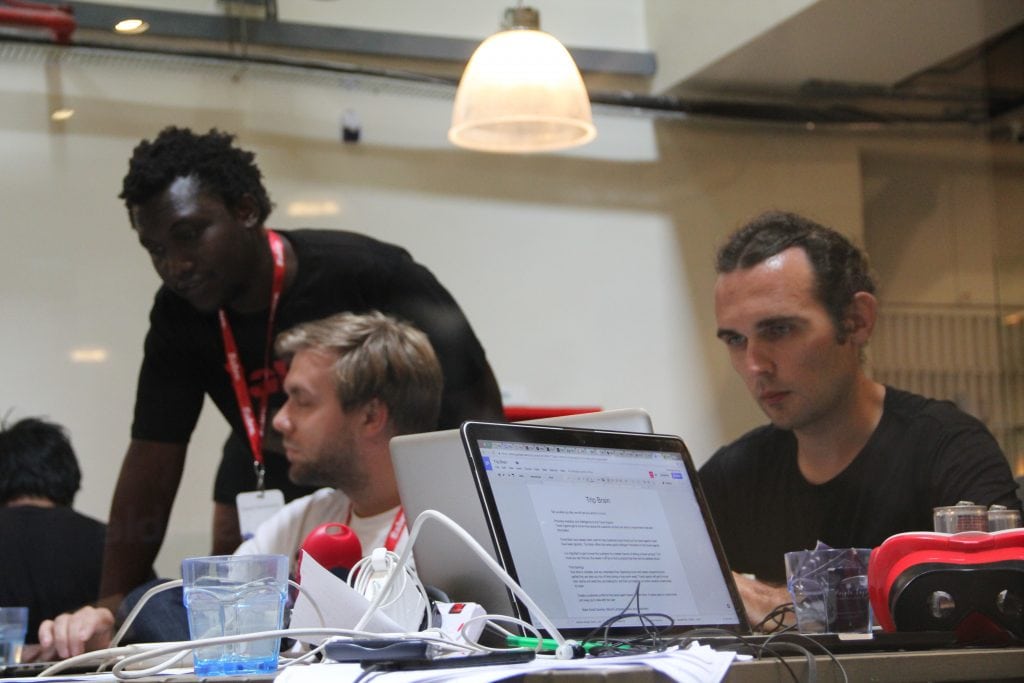Skift Take
After years of friction, Sabre and corporate travel giants American Express Global Business Travel, Carlson Wagonlit, and Flight Centre, have agreed to work together to test what new distribution methods might look like. Questions of who will pay what have been postponed.
Sabre was the travel technology company that gave the most resistance to airline industry efforts to embrace new ways of retailing travel. Yet in the past year, new CEO Sean Menke has signaled his intent to move with the times.
On Tuesday, the company said it has “a commitment to advance at an industry level” new technological and business practice methods with American Airlines and several key players in corporate travel — American Express Global Business Travel, Carlson Wagonlit Travel, and Flight Centre Travel Group, according to Sabre’s Kathy Morgan, vice president of new distribution capability.
Here’s the backstory: Several years ago, many airlines created the New Distribution Capability (NDC), a set of technology standards that will help airlines provide more sophisticated selling capabilities to travel agents.
Sabre — and to a lesser extent its fellow third-party travel distributors Amadeus and Travelport — resisted the effort, due to issues of cost, control, and hubris. The standards use modern programming data transmission standards and work best on cloud-based networks that Sabre is only fully embracing this year. (For more, see our story, “Channel Shock“).
American Plays Nice
American Airlines’ involvement in the new Sabre-led initiative is particularly notable. The carrier has had a long-running set of legal and publicity battles with Sabre over distribution.
A case in point: Fourteen months ago, American Airlines revived its efforts at encouraging travel agencies to book their travel directly with it rather than through middlemen like Sabre. The program includes favorable commission terms and access to some exclusive content.
On Tuesday, American’s director of distribution strategy, Neil Geurin, said the program is “going quite well” and that it makes sense for some travel agencies.
“But we also have customers who see the value of the GDS [global distribution system] path for NDC, and so our expectation is that both will live,” Geurin said.
Testing More Personalized Retailing
Tuesday’s announcement punted on the hard questions — namely, who will pay what and how much content airlines will distribute in the new paths. The companies instead agreed to fine-tune and test new technology and agent workflows.
Morgan at Sabre said, “We’ll start with airline APIs [application program interfaces, or methods of sharing data] and test how to apply those in different contexts in the indirect channel — whether its a TMC [travel management company] workflow, a corporate booking tool, or a leisure-centric agency. We need to make sure we have the right expertise in assisting the end-to-end flow [of airline content].”
The rise of new distribution standards has led to a new wave of tech vendors that aim to help airlines distribute more content directly to agencies. Companies such as Farelogix and Travelfusion have been helping airlines such as Lufthansa use the new standards and technologies to power their direct connections.
As another example, in April, Verteil launched the ability for travel agencies in India to connect to American Airlines’ content distributed via the new standards. The solution makes it easier for agents view, select a seat on a seat map and book paid ancillary products such as American’s Main Cabin Extra seats, which primarily provide extra legroom.
Many agencies have remained skeptical that you can kick the legacy technology giants out of the distribution chain.
“There’s a lot of innovation out there, and a lot of it is still to be determined,” said John Bukowski, director of global content and distribution strategy at American Express Global Business Travel. “Our focus has been around making sure we get access to content in an efficient way that’s scalable across multiple airlines and multiple points of sale.”
“We’ve been studying NDC and its cost to market, and we’ve yet to see a full end-to-end solution that can scale to help a TMC like CWT,” said Carlson Wagonlit Travel’s Vince Chirico, senior vice president global network and technology partners.
“We think the GDSs are the fastest path to market as they’re the only ones who can provide a full end-to-end solution at scale,” Chirico said.
Sentiments like that are music to the ears of Sabre and its peers Amadeus and Travelport, who want to retain their centrality to travel distribution.
The Daily Newsletter
Our daily coverage of the global travel industry. Written by editors and analysts from across Skift’s brands.
Have a confidential tip for Skift? Get in touch
Tags: american airlines, corporate travel management, ctir, ndc, sabre
Photo credit: Shown here are developers, designers, and entrepreneurs competing in Sabre’s annual global hackathon. The travel technology giant has begun pilot testing New Distribution Capability (NDC) technical standards for travel distribution along with key industry partners. Sabre
